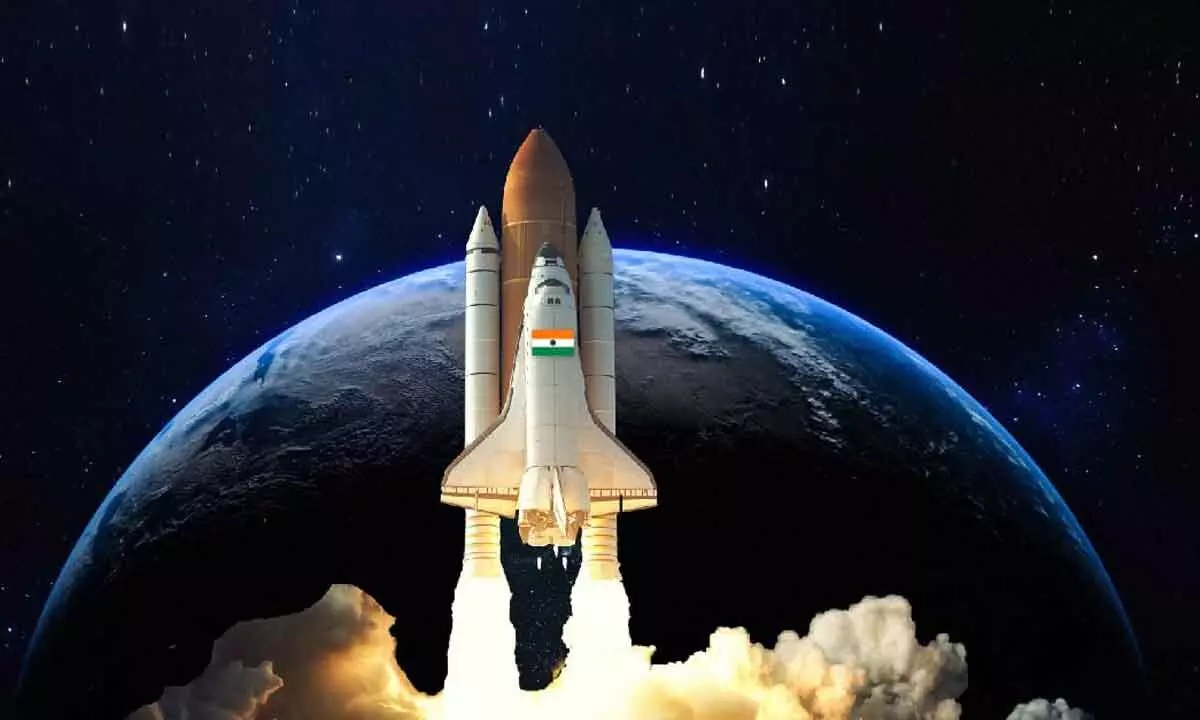Indian space economy to be $40-100bn by 2040
Chandrayaan was the first to detect the H2O molecule: Union Minister
image for illustrative purpose

The next significant development in the Indian space programme will be the Gaganyaan human spaceflight mission, for which one of the trial flight test has already happened. By 2025, India would be sending a man to space and bringing him back safely - Jitendra Singh, MoS for Atomic Energy and Space
Game-Changer
- Govt opens the space sector to pvt players
- 70% of space resources coming from non-govt sectors
- Indian space economy just $8mn now
Thiruvananthapuram: India’s space economy is poised to reach $40 billion by 2040, and scientists will also enjoy a better working environment, Union Minister Jitendra Singh said here. The Minister of State (MoS) for Science and Technology & Atomic Energy and Space (Independent Charge) said that some foreign agencies like the AKD have predicted that this figure could even go up to $100 billion by 2040.
“At present, our space economy is not very impressive, as we have just about $8 million. But we are moving in quantum jumps, and in the foreign satellite launch alone, we have earned about EUR230–240 million for launching European satellites and about $170-180 million for launching American satellites,” Singh said.
He was speaking to PTI after inaugurating the 60th-anniversary celebrations of ISRO’s rocket launch here on Saturday. Singh said that with the establishment of the National Research Foundation, Anu Sandhan, a better model of similar foundations existing in US, a significant industry presence could be established.
“With this, more than 70 per cent of our space resources are going to come from the non-government sector. So, this is also going to supplement our resources,” the minister said. Agreeing with the fact that India did face a resource crunch in its space sector, he said, “we could tide it over with the great scientific acumen we have.” “We could even overtake other countries with that. Although they were the first to land a human on the Moon, Chandrayaan was the first to detect the H2O molecule,” the minister said.
He said the ‘courageous’ decision of the political dispensation to open up the space sector to private players has been a game-changer.
“This has supplemented our resources both fund-wise and knowledge-wise,” Singh added. He said the opening up of the sector also helped popularise the concept of space science in the country. “The entire nation got involved in Chandrayaan. It was like the whole of science plus, the whole of the government plus, the whole of the nation,” Singh said.
The minister said that the next significant development in the Indian space programme will be the Gaganyaan human spaceflight mission, for which one of the trial flight test has already happened.

